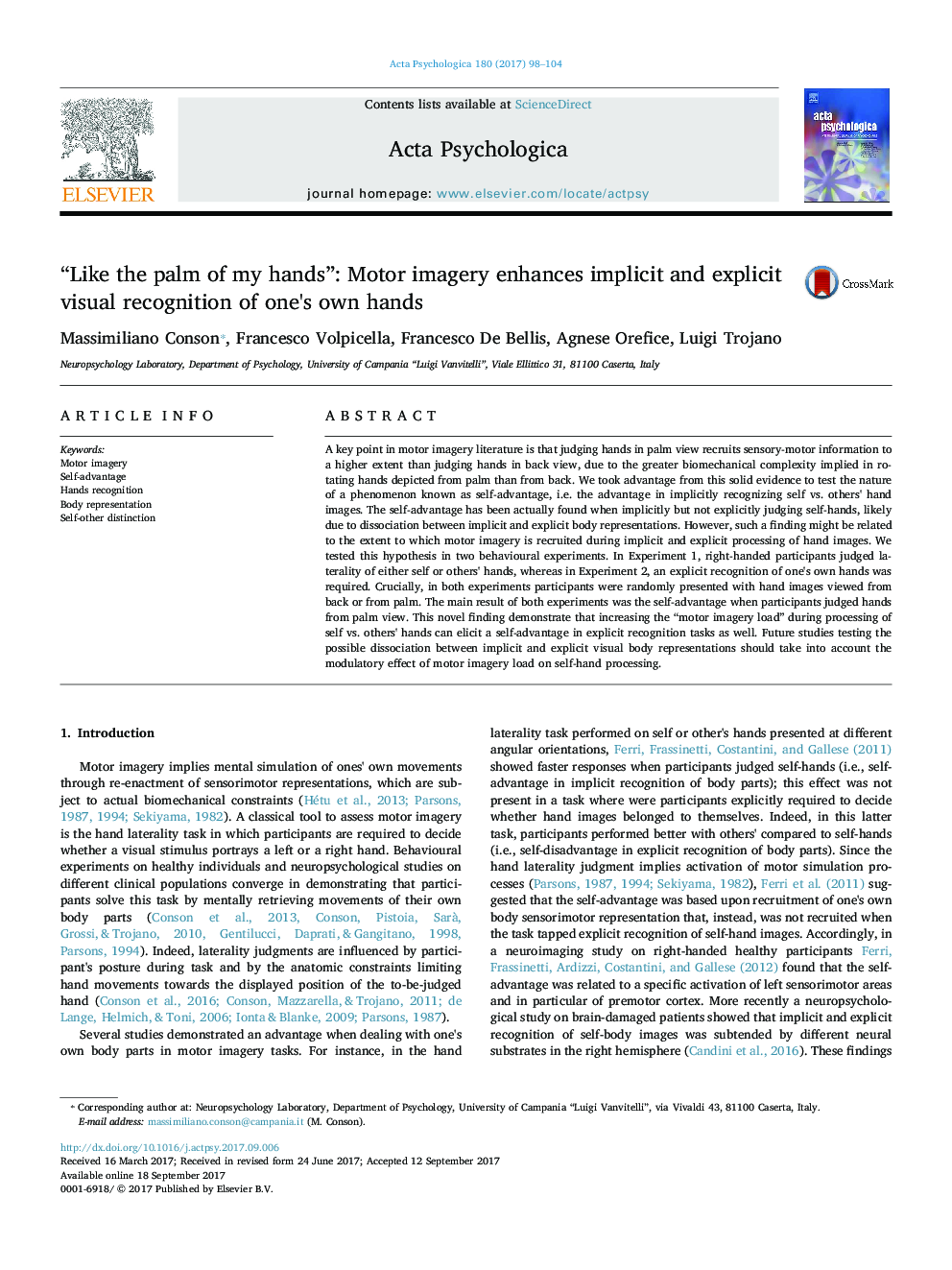| Article ID | Journal | Published Year | Pages | File Type |
|---|---|---|---|---|
| 5040186 | Acta Psychologica | 2017 | 7 Pages |
â¢Self-hands are recognized faster and more accurately than others' hand images.â¢Implicit but not explicit recognition of self-hands generates the self-advantage.â¢By presenting hands in palm view we boosted motor imagery during hands recognition.â¢Implicitly and explicitly processing hands in palm view evoked the self-advantage.â¢Motor imagery has a modulatory role on self-hands recognition.
A key point in motor imagery literature is that judging hands in palm view recruits sensory-motor information to a higher extent than judging hands in back view, due to the greater biomechanical complexity implied in rotating hands depicted from palm than from back. We took advantage from this solid evidence to test the nature of a phenomenon known as self-advantage, i.e. the advantage in implicitly recognizing self vs. others' hand images. The self-advantage has been actually found when implicitly but not explicitly judging self-hands, likely due to dissociation between implicit and explicit body representations. However, such a finding might be related to the extent to which motor imagery is recruited during implicit and explicit processing of hand images. We tested this hypothesis in two behavioural experiments. In Experiment 1, right-handed participants judged laterality of either self or others' hands, whereas in Experiment 2, an explicit recognition of one's own hands was required. Crucially, in both experiments participants were randomly presented with hand images viewed from back or from palm. The main result of both experiments was the self-advantage when participants judged hands from palm view. This novel finding demonstrate that increasing the “motor imagery load” during processing of self vs. others' hands can elicit a self-advantage in explicit recognition tasks as well. Future studies testing the possible dissociation between implicit and explicit visual body representations should take into account the modulatory effect of motor imagery load on self-hand processing.
